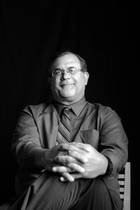
Richard N. Velotta
Would you change your flight plans if you found out your airplane’s pilot or co-pilot had minimal experience?
That question has been raised since Asiana Airlines Flight 214 crashed at San Francisco International Airport, killing three passengers.
While the full report from the National Transportation Safety Board likely won’t be issued until next year, aviation experts say it appears pilot error caused the crash. The cockpit crew failed to maintain minimum air speed to bring the Boeing 777 in and aborted the landing too late.
The crash sheared off the landing gear and tail of the plane and started a fire that spread to the cabin. Despite half of the emergency escape chutes failing to deploy, most of the 307 passengers and crew members escaped.
The pilot controlling the plane during the landing had only 43 hours of experience flying a Boeing 777 but more than 9,000 hours flying other aircraft.
His lack of experience has pushed some consumer advocacy groups to press the federal government for public disclosure of pilots’ flying records. It’s an issue worth examining with millions of tourists flying in and out of Las Vegas every year.
The Federal Aviation Administration maintains a database of licensed pilots, used primarily by airlines checking records before hiring. The FAA says the information in the database is complex and the public wouldn’t get anything out of it. Besides, some pilots with 300 hours of experience may be better at their jobs than those with 10,000 hours.
Incidentally, the FAA recently raised minimum flight time requirements for co-pilots, from 250 hours to 1,500 hours. The change was announced just after the Asiana crash but came in response to the 2009 Colgan Airlines crash in Buffalo, N.Y.
A Colorado company has been working for months on its own pilot rating system that would enable people to see pilot reviews in a Yelp-like format. Convergent Performance works to help reduce human errors in high-risk operations.
If you had such a rating system in your hands, how would you use it? Would you change flights if you discovered that your pilot had minimal experience on a specific type of aircraft?
Keep in mind that last-minute flight changes can be expensive.
And last-minute crew changes are commonplace in the airline industry. Companies regularly call in backups to accommodate crews affected by weather, illness and unforeseen schedule changes.
Some experts expect pilot experience issues will get worse in the future.
Many commercial pilots are former military pilots. With the military expanding its use of unmanned drones, there will be fewer military pilots to step in to commercial jobs in the future.
Pilots who fly commercially receive hundreds of hours of training in simulators, and most are well equipped to handle bad weather and emergencies. And many of today’s airliners, including the Boeing 777, can land themselves.
I tell people all the time about the day I landed an Airbus A320 in a Salt Lake City snowstorm thanks to the plane’s technology. (I mention only afterward that it was in a simulator.)
Even if pilot error ultimately is reason for the Asiana crash, flying remains the safest mode of transportation available. I think of that every time I get on Interstate 15.